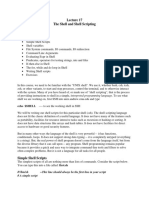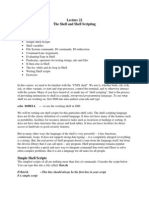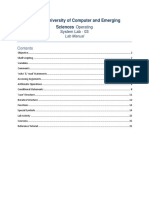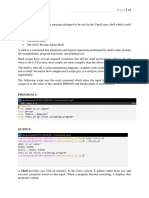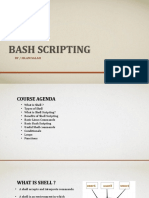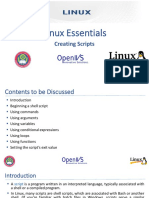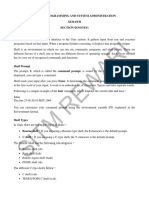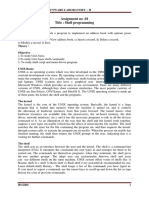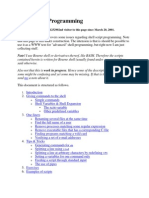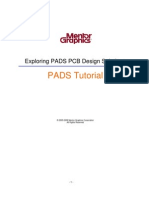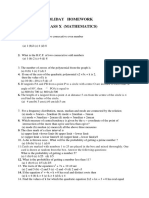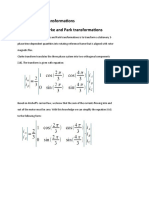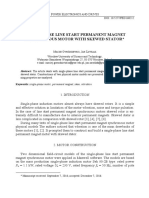0% found this document useful (0 votes)
112 views44 pagesWeek 9 Lecture Notes
This document provides an introduction to shell scripting and shell variables in Unix/Linux. It discusses the purpose of shell scripts, considerations for creating them such as planning the steps, and how to write scripts including using the shebang line and echo/read commands. It also covers environment variables, user-defined variables, and positional parameters. Exercises are provided to get hands-on practice with shell scripting concepts.
Uploaded by
Junior EkenCopyright
© © All Rights Reserved
We take content rights seriously. If you suspect this is your content, claim it here.
Available Formats
Download as PDF, TXT or read online on Scribd
0% found this document useful (0 votes)
112 views44 pagesWeek 9 Lecture Notes
This document provides an introduction to shell scripting and shell variables in Unix/Linux. It discusses the purpose of shell scripts, considerations for creating them such as planning the steps, and how to write scripts including using the shebang line and echo/read commands. It also covers environment variables, user-defined variables, and positional parameters. Exercises are provided to get hands-on practice with shell scripting concepts.
Uploaded by
Junior EkenCopyright
© © All Rights Reserved
We take content rights seriously. If you suspect this is your content, claim it here.
Available Formats
Download as PDF, TXT or read online on Scribd
/ 44

